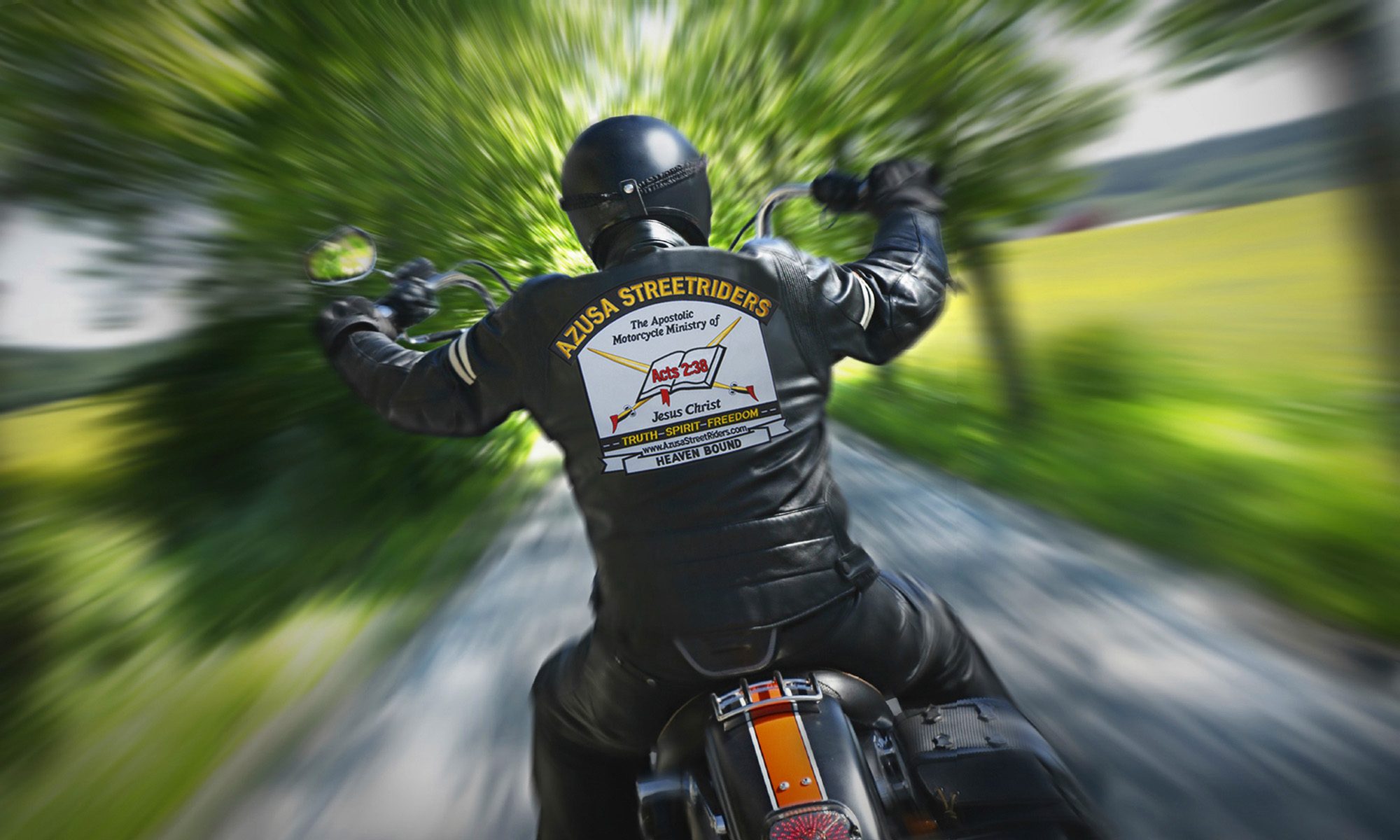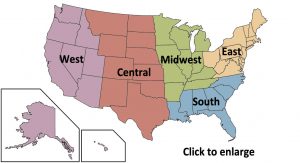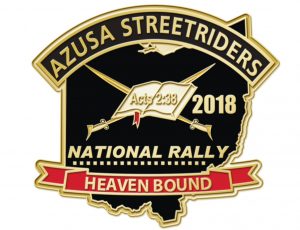
Amazon Smiles


Azusa StreetRiders International
The Apostolic Motorcycle Ministry of Jesus Christ ~ Official Site



California
The states anti-profiling bill (A.B. 2972), would prohibit law enforcement officers from stopping and questioning motorcyclist based on their choice of vehicle or clothing,cleared the policy committee on a 5-2 vote. However, the measure met opposition on the Assembly floor, resulting in a 28-24 vote against the bill. Assembly member Ann Caballero who introduced the bill, requested reconsideration, which means the bill may be voted on again before the July1 deadline. Also A.B.2761 introduced by Assembly member Jay Obernolte, would authorize the driver of a vehicle facing a traffic-actuated signal that fails to turn green with in a reasonable period of time to proceed with caution when it is safe to do so, after having stopped at the intersection. Similar legislation has been adopted in 16 states already.
Florida
Driving requirements for auto cycles change July 1, allowing residents to operate these vehicles with a valid state driver’s license.
According to the American Association of Motor Vehicle Administrators, an auto cycle is “a three-wheel motorcycle that has a steering wheel and seating that does not require the operator to straddle or sit astride it”.
Nebraska
The auto cycle definition has been adopted for three-wheeled vehicles such as the Polaris Slingshot. State residents no longer have to obtain a motorcycle endorsement to drive them in Nebraska. State Sen, Jim Smith, who sponsored the legislation, said the change helps broaden the market for the vehicles and “makes it easier for the small businesses who sell them to expand and create jobs.”
Colorado
H.B.1272 is a distracted driving proposal that requires cell service providers to make distraction-control technology available. Use of the technology would be at the customer’s discretion. The technology would limit distracting content from the network on any mobile device while the customer is driving. The bill was introduced by state Reps Mike Foote and Jovan Melton.
Mississippi
Drivers of auto cycles, such as the Polaris Slingshot, will no longer have to obtain a motorcycle endorsement on their licenses after July 1. Mississippi is the 43rd state to adopt such legislation.
Michael Theodore
National Road Captain
State of Ohio Coordinator

The question always comes up. Should you stick with the tire pressure recommended in your owner’s manual? Or should you go by the maximum pressure listed on your tires sidewall?
Answer to this question is. Check the air pressure with a good tire gauge. Check them when your tires are cold or at least 3 hours after a ride. As part of your pre-ride inspection, and adjust it according to your motorcycle owner’s manual. Or the tire information label on the chain guard,frame or swing arm.
There maybe two sets of recommendations for tire pressure one for solo riding and one for riding with a passenger and /or cargo.
Never exceed the maximum inflation pressure listed on the tire’s sidewall. And never exceed the motorcycle’s or tire load limit (combined weight of operator,passenger,cargo and accessories), since that can cause tire failure.
Some riders reduce the frequency of tire pressure checks to once a week or two before long trips. And perform only a visual inspection for surface conditions is this you? How ever, be aware that it is impossible to determine proper inflation by appearance alone. Again a accurate pressure gauge is needed, unless your motorcycle is equipped with a tire pressure monitoring system that gives a specific pressure read out.
Proper tire pressure is critical for optimal bike handling and maximum tire life.
Under-inflation or overloading can cause heavy steering,irregular wear,internal damage due to over-flexing and tire separation from the rim. Over inflation can reduce the contact area (and available traction) and can make the motorcycle react harshly to bumps.
Safe riding depends on selecting the right tires,inspecting them and maintaining them and replacing them.
Always be aware while riding Keep the contact patch between the lines.
Michael Theodore
National Road Captain
State of Ohio Coordinator

Michael Theodore
National Road Captain
Ohio Coordinator

There will be three Host hotels right by each other The Hampton Inn (there is only 1 king bed room left). Residence Inn by Marriott(there are still rooms available at this time). We have added 10 more double rooms at the Fairfield Inn for the discounted 99.00 room rate.
Rooms are blocked off under the name ”ASR National Rally” You must let receptionist know when you book your room to receive your discounted rate.
Fairfield Inn
1860 Niles Cortland Rd. SE
Warren, OH 44484
330-544-5774
Room type-Double room
10 rooms blocked off at a discounted rate of 99.00 a night.
Hampton Inn & Suites
5581 Youngstown-Warren Road
Niles, Ohio 44446
330-652-1277
Room Type
Queen and King rooms
20 Rooms are blocked off at a discounted rate of $99.00 a night. (There is only 1 king bed room left)
Residence Inn by Marriott
5555 Youngstown-Warren Road
Niles, Ohio 44446
330-505-3655
Room Type
One Bedroom Suite there are 10 of these rooms blocked off
Studio Room there are 10 of these rooms blocked off
20 rooms are blocked off here at the discounted rate of $109 a night.
The Residence Inn is connected to our mall so if the need arises for a shopping trip.
If you have any problems with booking your room contact Michael Theodore 330-720-0440 blueknight1703@aol.com
Other hotels in the area:
Days Inn 1300 Youngstown Warren Rd. Warren, OH 44446 330-544-1301
Econo Lodge 4258 Youngstown Warren Rd. Warren, OH 44484 330-369-4100
Holiday Inn Express & Suites 135 Highland Terrace Blvd. Warren, OH 44484 330-544-8807
Meet & Greet will be at the Residence Inn by Marriott from 3 PM to 6 PM on August 1. There is a huge room set up for our ASR fellowship and food will be provided.
Wednesday service begins at 7:00PM.
Thursday pre service prayer starts at 7 PM. Service begins at 7:30. Guest speaker is Missionary Dwayne Abernathy from Belize
Friday pre service starts at 7:00 PM. Service begins at 7:30. Guest speaker is Reverend David Bounds from Parkersburg, WV
Saturday Business meeting at 8 AM for Coffee & Donuts. 9 AM starts meeting. Lunch will be served following the business meeting.
Sunday is 9th Annual Biker Sunday in Memory of Michael Theodore Jr. Service starts at 10:00AM Guest Speaker is Reverend David Bounds.
Ride to follow after service.
ASR Fellowship Outreach Rides
Thursday Kickstands up at 10 AM sharp
Friday Kickstands up at 10 AM sharp
Azusa StreetRiders members registration will be 25.00 for Adults which includes: ASR rally pin, name tag, Saturday morning snack and lunch.
With the website under construction at this time you can contact Sis Theodore at laureen.theodore@azusastreetriders.com or call 330-720-4382 for pre registration and payment.
Michael Theodore
National Road Captain
Ohio Coordinator
Posting this on behalf of the State of Maine Men’s Ministry looks like a Great Ride.


Wanted to take a moment to welcome our newest members to the Azusa StreetRiders Ministry:
June 2018
Bro Kevin Renick
of The United Pentecostal Church of New Straitsville, OH
Pastor Mike Thompson
Sis Ashley Renick
of The United Pentecostal Church of New Straitsville, OH
Pastor Mike Thompson
Brother & Sister Rawk
of Kings Temple, Shreveport, LA
Pastor Damon Magee
May 2018
Brother James Baker
of Bristow United Pentecostal Church, Bristow, IN
Pastor Clarence Enmen,
Brother Mark Waltz
of Liberty Tabernacle Church, Whiteland, IN
Pastor Brian Lane
Brother & Sister Shayne Benoit
of F.A.C. Maryville, Maryville, TN
Pastor Kenneth Carpenter
(See Below)
(See Below)
How proud we are of our accomplishments and wins!! We all love to be a success in what ever we do. Success should drive us to be the best we can be in both our secular lives and in our walk with God. The question is how do we measure our success!
Our measuring stick and Gods differ in many ways. Our ways are not his ways and I believe that is a great thing! When I don’t understand, he does. When I can’t move in any direction, he makes a way out of thin air! What a wonderful thing to be in the hands of a loving God!
In a few months we will be meeting for our national rally and I wanted to be sure and encourage all of our members to try and be there! Why? So that we can worship the one who has made us a success together! To be able to seek direction and to hear from him!
For those who will be running for office let the Lord direct you and your heart! Remember that it is a sacrifice of love (and money lol) to be able to reach into the lives of this membership and try to be an encouraging voice. It has been a privilege to serve this last year and it still feels like I only just started!
So much to do and so little time! The fields are truly white unto harvest!
Will God be pleased with our success? We can only hope and pray that we hear well done! I believe that if we put our whole heart into this ministry that we are a part of we cannot fail! Our prayer and spirit filled lives will be the difference in a dark world. This who are seeking the Savior are the important contacts that we make! Lord, let our lights shine brightly! Let us do what we do with all of our might and spirit!
Pastor Randy Hennigan
ASR National Vice President